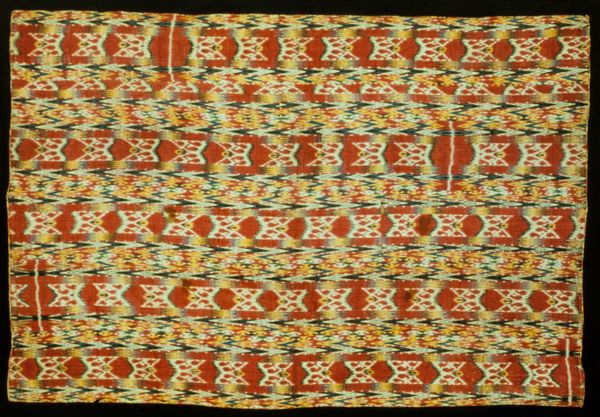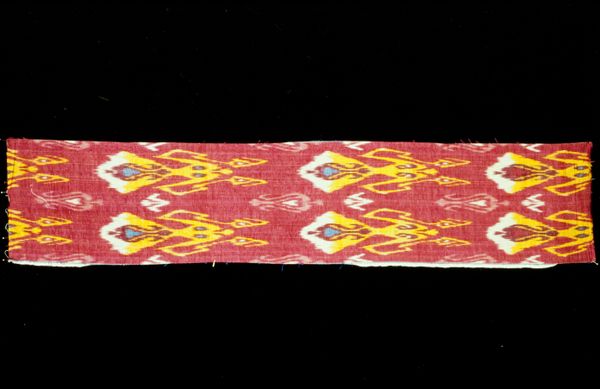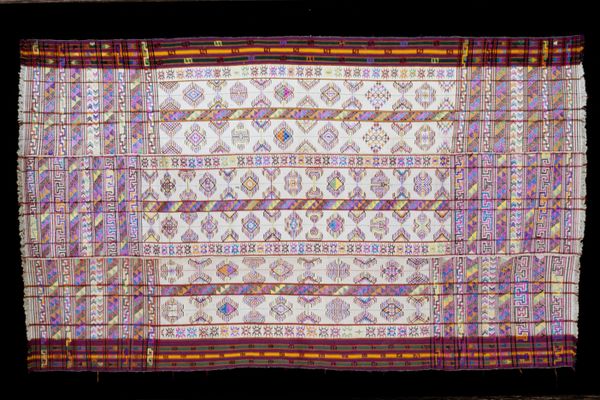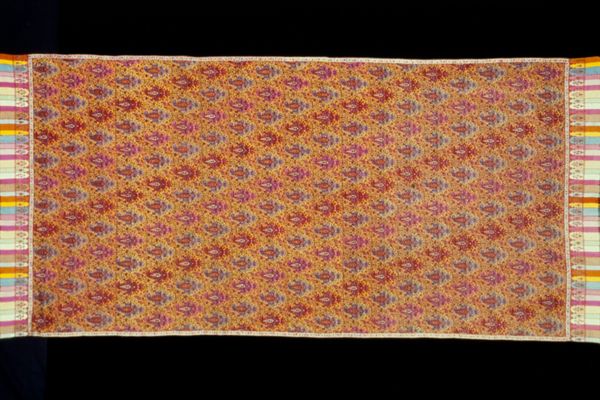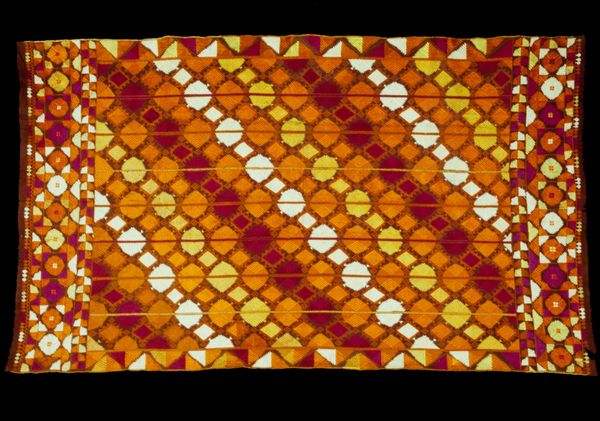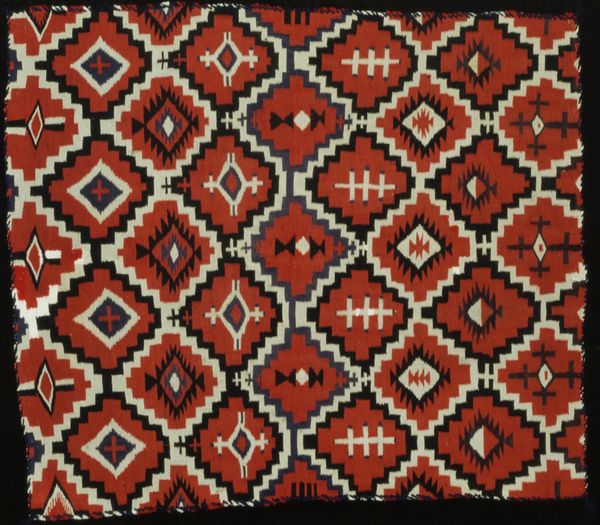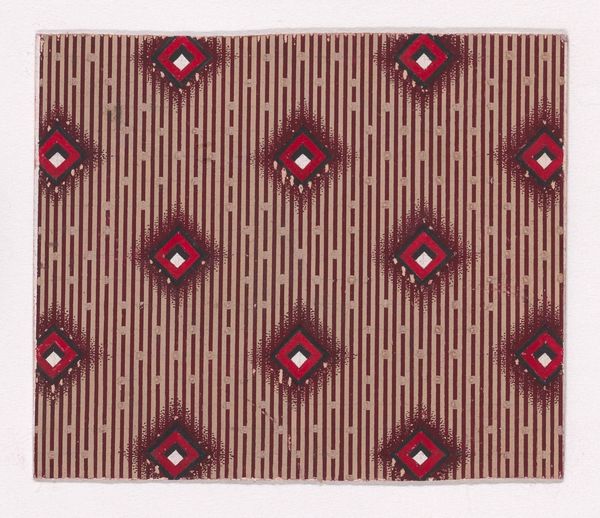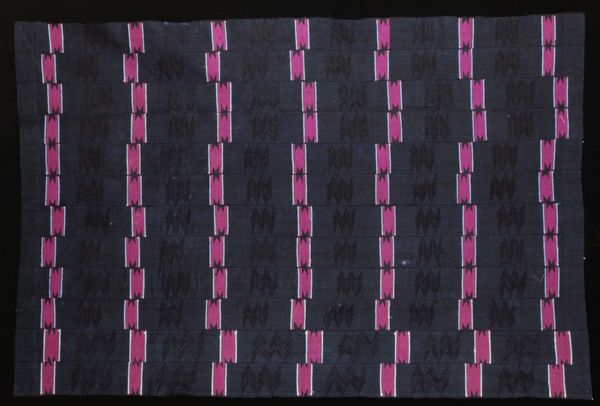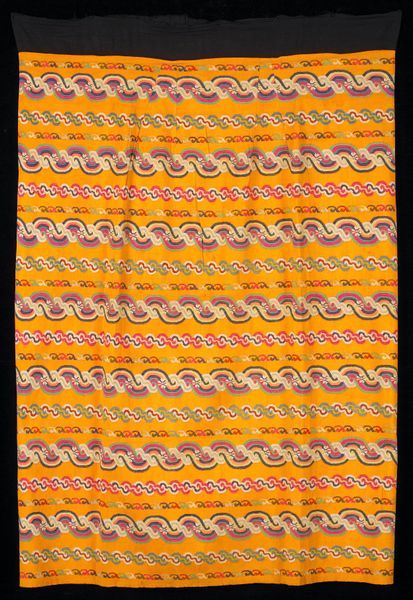
mixed-media, panel, textile
#
mixed-media
#
organic
#
panel
#
pattern
#
asian-art
#
textile
#
geometric pattern
#
organic pattern
#
geometric
Dimensions: 23 x 61 in. (58.42 x 154.9 cm)
Copyright: Public Domain
Editor: Here we have an intriguing piece from around the 19th century, titled "Panel," housed right here at the Minneapolis Institute of Art. The artist is, sadly, unknown. It's mixed-media, primarily textile, with these fascinating organic and geometric patterns. It gives me a feeling of organised chaos! How would you interpret this panel? Curator: That's a perceptive initial response! I see this piece as deeply embedded within a specific cultural and socio-economic context. Given it’s Asian art and likely a textile fragment, perhaps part of a larger garment or furnishing. Notice the repeated pattern; it wasn't merely decorative. How might this pattern have been used, what public purpose did it serve? Editor: Possibly a symbol of status? The detail seems quite intricate; it couldn’t have been cheap to produce. Curator: Precisely. The textile likely signified wealth and status, visually communicating social hierarchies. Think about who would have commissioned it, who would have worn or used it, and in what setting. The anonymity of the artist is also significant. It underscores a production model focused on skilled craftsmanship, perhaps collaborative workshop-based output, rather than individual artistic expression. The cultural value placed is on the status it brings rather than its maker. Does the piece raise questions for you? Editor: Yes, definitely! The colour palette... it seems almost deliberately limited. Would this have also played a role in signifying something, perhaps availability of dye, or even tradition? Curator: An excellent question! The availability and cost of dyes undoubtedly played a role, as did established traditions governing colour symbolism. Purple, for example, often carried associations with royalty or spiritual power across many cultures. These panels often visually reinforced existing social orders and cultural narratives. Editor: So, seeing it as a textile gives it an entirely new dimension – not just pretty fabric, but a coded message about wealth, power, and cultural values, displayed in a public setting. Fascinating! Curator: Exactly. It moves the artwork beyond mere aesthetics, connecting it directly to the socio-political forces at play during its creation. Art is never really made in a vacuum.
Comments
No comments
Be the first to comment and join the conversation on the ultimate creative platform.

